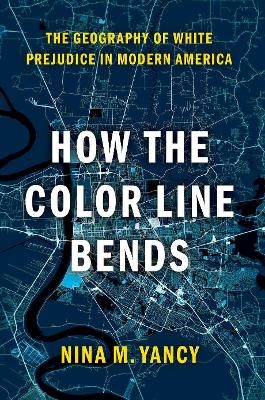
How the Color Line Bends
The Geography of White Prejudice in Modern America
Seiten
2022
Oxford University Press Inc (Verlag)
978-0-19-759943-3 (ISBN)
Oxford University Press Inc (Verlag)
978-0-19-759943-3 (ISBN)
In 2019, a group of Louisianans voted to create a new city in part of the Baton Rouge area. The effort drew attention not only because the decision would create a disproportionately White and wealthy city, but also because it would leave the area's considerably poorer, majority-Black school district behind. As this story suggests, local geography, politics, and prejudice are linked in American racial politics. This book explores the relationship between where White Americans live and their attitudes about race.
In How the Color Line Bends, Nina M. Yancy shows that what White people think depends on where they live--but not, as conventional wisdom might suggest, because they are more likely to feel "threatened" where race is salient. Rejecting this tendency to tacitly position White Americans as victims, this book focuses on power, agency, and positionality in the study of prejudice and place. Yancy looks at the White perspective through a number of racialized issues, including education, affirmative action, and welfare spending in cities across the United States, as well as a vivid case study of Baton Rouge. Being explicit about Whites Americans' racialized vantage point allows us to better appreciate the capacity of prejudice to ebb and flow in response to local conditions across a diverse nation. Yancy also illustrates why the "color line" remains relevant--if we appreciate the ability of that line to harden or soften, but not necessarily break.
In How the Color Line Bends, Nina M. Yancy shows that what White people think depends on where they live--but not, as conventional wisdom might suggest, because they are more likely to feel "threatened" where race is salient. Rejecting this tendency to tacitly position White Americans as victims, this book focuses on power, agency, and positionality in the study of prejudice and place. Yancy looks at the White perspective through a number of racialized issues, including education, affirmative action, and welfare spending in cities across the United States, as well as a vivid case study of Baton Rouge. Being explicit about Whites Americans' racialized vantage point allows us to better appreciate the capacity of prejudice to ebb and flow in response to local conditions across a diverse nation. Yancy also illustrates why the "color line" remains relevant--if we appreciate the ability of that line to harden or soften, but not necessarily break.
Nina M. Yancy holds a doctorate in Politics from the University of Oxford, where she was a Rhodes Scholar.
List of Figures
List of Tables
Chapter 1. Prejudice and Place
Chapter 2. The Case of St. George and the Outsider Within
Chapter 3. The White Perspective in a Divided City
Chapter 4. The Geography of White Opposition to Welfare
Chapter 5. Affirmative Action and the Threat of the Black Middle Class
Chapter 6. Visibility and Responsibility
Appendices
References
| Erscheinungsdatum | 09.03.2022 |
|---|---|
| Verlagsort | New York |
| Sprache | englisch |
| Maße | 218 x 149 mm |
| Gewicht | 494 g |
| Themenwelt | Geisteswissenschaften ► Philosophie |
| Sozialwissenschaften ► Politik / Verwaltung ► Vergleichende Politikwissenschaften | |
| ISBN-10 | 0-19-759943-5 / 0197599435 |
| ISBN-13 | 978-0-19-759943-3 / 9780197599433 |
| Zustand | Neuware |
| Haben Sie eine Frage zum Produkt? |
Mehr entdecken
aus dem Bereich
aus dem Bereich
Geschichte, Parteistruktur, Radikalisierung
Buch | Softcover (2024)
UTB (Verlag)
CHF 38,95


